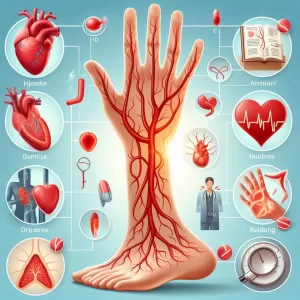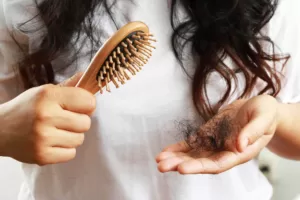Qu'est-ce que l'épluchage ou la coupe d'une lésion hyperkératosique bénigne
Headline: The Power of Positive Thinking
Body: Positive thinking is a powerful tool that can help you achieve your goals and live a happier life. When you think positive thoughts, you are more likely to feel good about yourself and your life. You are also more likely to take action and make things happen.
``` Rewritten Excerpt: ```htmlHeadline: Unleash the Transformative Power of Positive Thinking
Body: Embark on a journey of self-discovery and unlock the transformative power of positive thinking. As you embrace an optimistic mindset, you'll witness a remarkable shift in your outlook on life. Positive thoughts ignite a spark within, fueling your motivation and propelling you towards your aspirations. Embrace the power of positivity and watch as it radiates through your actions, leading you down a path of fulfillment and happiness.
``` Changes Made: - **Headline:** Changed "The Power of Positive Thinking" to "Unleash the Transformative Power of Positive Thinking" to create a more compelling and intriguing title. - **Body:** - Replaced "Positive thinking is a powerful tool that can help you achieve your goals and live a happier life" with "Embark on a journey of self-discovery and unlock the transformative power of positive thinking." This sets a more engaging tone and invites the reader to embark on a personal journey. - Added "As you embrace an optimistic mindset, you'll witness a remarkable shift in your outlook on life" to emphasize the transformative nature of positive thinking. - Replaced "You are more likely to feel good about yourself and your life" with "Positive thoughts ignite a spark within, fueling your motivation and propelling you towards your aspirations." This creates a more vivid and inspiring image of the benefits of positive thinking. - Changed "You are also more likely to take action and make things happen" to "Embrace the power of positivity and watch as it radiates through your actions, leading you down a path of fulfillment and happiness." This highlights the tangible impact of positive thinking on one's actions and overall well-beingDéfinition et aperçu
Paring or cutting of benign hyperkeratotic lesions, such as corn or callus, is the primary treatment or removal method for skin defects caused by the thickening of the stratum corneum or the outermost layer of the epidermis. Since they are benign, patients who have such lesions usually wish to have them removed for cosmetic reasons. However, there are also some instances wherein the corns and calluses cause pain and may have a greater effect on the patient’s way of life. Removing them in such cases is considered as a medical treatment. Paring and cutting is the easiest way to achieve this.
Qui devrait subir et résultats attendus
La procédure est destinée aux patients souffrant d'hyperkératose, un défaut cutané qui se développe lorsque la couche la plus externe de la peau s'épaissit anormalement en raison de la quantité accrue de kératine, la protéine résistante et protectrice de la peau. La peau s'épaissit généralement en réponse protectrice aux frottements, pressions et irritations fréquents, c'est pourquoi des cors et des callosités se forment souvent dans des zones, telles que les mains et les pieds, qui reçoivent plus de frottement que d'autres parties du corps.
Les lésions hyperkératosiques bénignes se présentent sous différentes formes, telles que :
- Cors et callosités – Ceux-ci sont causés par d'épaisses couches de peau morte qui s'accumulent à la surface du corps et durcissent à la suite de frottements ou de pressions répétés.
- verrues
- Eczéma, ce qui provoque une peau sèche et desquamation
- Lichen plan
- Kératoses actiniques
- Kératoses séborrhéiques
Les cors sont de petites plaques épaisses de peau morte avec un centre compact et une forme à peu près ronde. Il y a des cors durs et des cors mous ; les cors mous sont plus mous parce qu'ils se trouvent dans des zones qui reçoivent beaucoup de sueur ou d'humidité - cela signifie également qu'ils sont plus susceptibles d'être infectés. Les callosités, en revanche, sont de plus grandes plaques de peau qui n'ont pas de forme spécifique mais qui ont une couleur jaunâtre bien définie.
Bien qu'ils ne soient pas les seuls types de lésions hyperkératosiques, les cors et les callosités sont les plus courants et aussi les plus simples à traiter. Les cors apparaissent le plus souvent sur les orteils, tandis que les callosités apparaissent généralement sur les paumes et la plante des pieds. Les personnes qui portent des chaussures serrées, des talons hauts, des chaussettes ou des bas serrés, et celles dont le travail ou les loisirs les obligent à exercer une pression constante et récurrente sur les mêmes parties de leur corps sont les plus susceptibles de les développer.
Certains cors et callosités sont asymptomatiques et, au pire, ont simplement l'air disgracieux, mais certains peuvent également causer de la douleur. Par exemple, des callosités gênantes sur la plante des pieds peuvent rendre difficile ou douloureux pour un patient de porter des chaussures ou de marcher correctement. Par conséquent, les éplucher ou les couper peut apporter non seulement des avantages esthétiques, mais également un soulagement de la douleur. Une fois le cor ou le callus retiré, ils peuvent facilement être évités en portant des chaussures appropriées.
However, paring or cutting benign hyperkeratotic lesions should not be done at home. It is best performed by a trained medical professional to prevent complications and ensure good cosmetic results.
Comment se déroule la procédure ?
L'épluchage ou la coupe des lésions hyperkératosiques bénignes est mieux effectué lorsque la peau est d'abord ramollie. Cela peut être fait en trempant d'abord les mains ou les pieds dans de l'eau tiède ou en appliquant un kératolytique. Les agents kératolytiques courants comprennent l'urée et l'acide salicylique.
Once the affected area is ready, the thickened skin of the corn or callus is pared down or cut away using a scalpel blade. For some patients, a single session is sufficient. However, some may require repeated sessions during which the corn or callus is trimmed away until they are completely gone.
Si la peau semble s'épaissir à nouveau, le patient peut l'empêcher en frottant simplement la peau avec une pierre ponce au moins une fois par semaine.
Risques et complications possibles
Les lésions hyperkératosiques bénignes peuvent parfois s'infecter et les couper peut augmenter ce risque. Si cela se produit, le patient peut avoir besoin de prendre des antibiotiques et tout pus qui peut s'être accumulé dans le maïs ou le cal infecté doit être évacué. La douleur ou l'inflammation qui peut accompagner la procédure peut être gérée avec des injections de cortisone.
Les références:
Kline A. "Variations congénitales découvertes dans la présentation clinique de l'hyperkératose de la main et du pied." Le journal en ligne du pied et de la cheville. 2009. https://faoj.org/tag/hyperkeratotic-lesions/
Freeman DB. "Cors et callosités résultant d'une hyperkératose mécanique." Suis Fam Physician. 1 juin 2002;65(11):2277-2280. http://www.aafp.org/afp/2002/0601/p2277.html
/trp_language]
[wp_show_posts id=””]**Question: What is Paring or Cutting of Benign Hyperkeratotic Lesion?**
**Answer:** Paring or cutting of benign hyperkeratotic lesions is a non-invasive procedure involving the removal of thickened, non-cancerous growths commonly known as calluses or corns from the skin’s surface, primarily on the feet. These lesions often result from repeated friction or pressure.
**Benign Hyperkeratotic Lesions:**
**Calluses:** Calluses are thick, hardened areas of skin, commonly found on the soles of the feet, heels, or toes. They develop as a natural response to friction or pressure, providing protection against further damage.
**Corns:** Corns are smaller, often hardened, cone-shaped lesions that typically appear on the top or sides of the toes. Unlike calluses, corns have a central core that presses inward, causing pain and discomfort while walking or standing.
**Paring/Cutting Procedure:**
Paring or cutting involves carefully thinning down the hyperkeratotic lesion using specialized instruments, such as a scalpel, blade, or files. Removal of the outer layer of the affected skin helps reduce pain and pressure and restores the normal appearance of the skin.
**When is Paring/Cutting Necessary?**
Paring or cutting may be necessary in cases where:
1. **Pain:** Severe pain or discomfort caused by the lesion makes walking or standing difficult.
2. **Thickening:** Excessive thickening of the lesion may lead to cracking and bleeding, increasing the risk of infection.
3. **Bleeding:** Calluses or corns may develop deep cracks, leading to bleeding and discomfort.
4. **Infection Risk:** Untreated lesions can increase susceptibility to infections, which may cause further complications.
5. **Prevention:** In cases of recurring calluses or corns, paring may be performed preventively to avoid excessive buildup and potential complications.
**Post-Treatment Care:**
1. **Moisturizing:** Applying moisturizer regularly helps prevent new calluses or corns from forming.
2. **Avoid Friction:** Use protective padding or insoles to reduce friction and pressure on the affected area.
3. **Change Footwear:** Wear properly fitting shoes or sandals to minimize pressure and friction.
4. **Avoid Barefoot Walking:** Walking barefoot can exacerbate the condition, so wearing appropriate footwear is recommended.
**Seek Professional Advice:**
While paring or cutting might seem like a simple procedure, it’s essential to seek professional guidance from a podiatrist or dermatologist if you notice any benign hyperkeratotic skin lesions. They can accurately diagnose the condition and recommend the most suitable treatment approach based on your specific needs.
**Keywords:**
– Benign Hyperkeratotic Lesions
– Calluses
– Corns
– Paring or Cutting
– Thickened Skin
– Pain or Discomfort
– Infection Risk
– Podiatrist
– Dermatologist
– Foot Care
– Skin Treatment
Un commentaire
Laisser un commentaire
Articles populaires








Removing noncancerous patches of hard skin”.